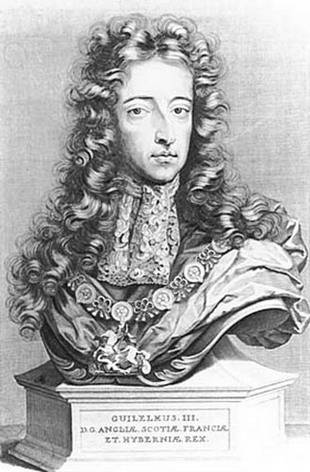Stadholder-King William III (1650-1702)
Prince William III – the only son of William II and his wife Mary Stuart, daughter of the British King Charles I – was born in The Hague a few days after his father’s death. When he was nine, the States of Holland took charge of his education. The decision not to let him succeed his father as stadholder of Holland, Zeeland and Utrecht marked the beginning of the first stadholderless period.

Britain and France launched a joint attack on the Republic in 1672. Popular pressure ensured that William III was given the same powers as his ancestors. He succeeded in turning the tide of war, and his military victories strengthened his position as stadholder.
William III strove to achieve a balance of power in Europe and spent the rest of his life fighting French ambitions on the continent. He helped cement successful alliances against France in a number of wars.
'Glorious Revolution'
In 1677 William III married his cousin Mary Stuart (1662-1695), who had the same name as his mother. Her father, the British King James II, was a Catholic. In Britain, his religion was seen as a threat to the position of the Protestant religion, and so in 1688 leading nobles called on William to land an invasion army from the Netherlands. The 'Glorious Revolution', as it is known, deposed James II. A year later, William and Mary were crowned King and Queen of England, Scotland and Ireland.
In 1702, at the outbreak of another war against France, the Stadholder-King died childless. His sister-in-law succeeded him in Britain as Queen Anne. In the Dutch Republic – except in Friesland and Groningen – the second stadholderless period began. It lasted until 1747.
In his will William III left all his estates and titles to his relative Johan Willem Friso, of the Frisian branch of the family.